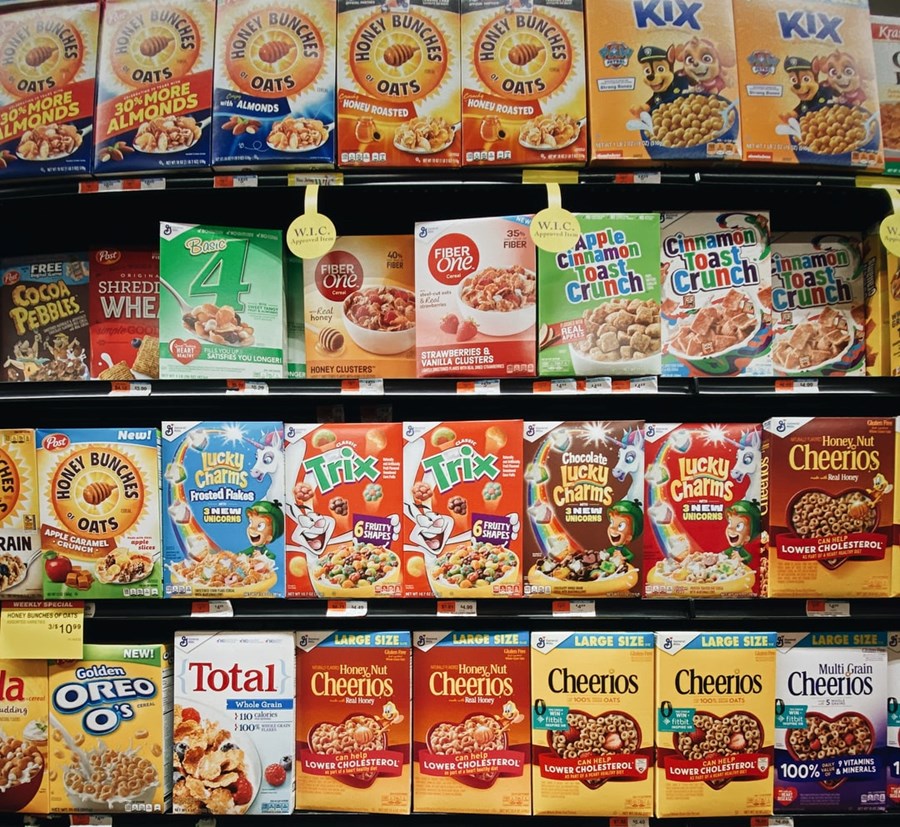
What do cereal, detergent and mouthwash have in common?
They all belong to a class of products known as consumer staples. Broadly speaking, consumer staples are essential products that we use daily such as food, beverages, household and personal care products.
Whether we’re in a recession or a boom market, we’ll always need products like shampoo and toilet paper. As such, the companies that make these items are said to maintain reliable, steady growth regardless of the economy.
Here’s 5 things to know.
1. Consumer staples stocks are defensive
The stock market has been volatile since the start of the year. This has prompted some investors to consider defensive stocks as a cushion for their portfolios.
Consumer staples are one example. Their non-cyclical nature means that no matter where we are in the economic cycle, the average consumer will still buy necessary consumer staples products in more or less the same quantities – regardless of their price.
Additionally, the consumer staples sector has historically experienced lower price volatility compared to other sectors, which are more correlated to business cycles. The sector’s relatively steady sales and profits also provide a source of stability during volatile markets.
While no stock is completely immune to market volatility, consumer staples stocks tend to decline much less during corrections. At this time of writing, the broad-based S&P 500 index has slipped nearly 7% in the year to date, but the S&P 500 consumer staples sector is only down 4% for the same period. In contrast, the S&P 500 information technology sector has dropped 13%.
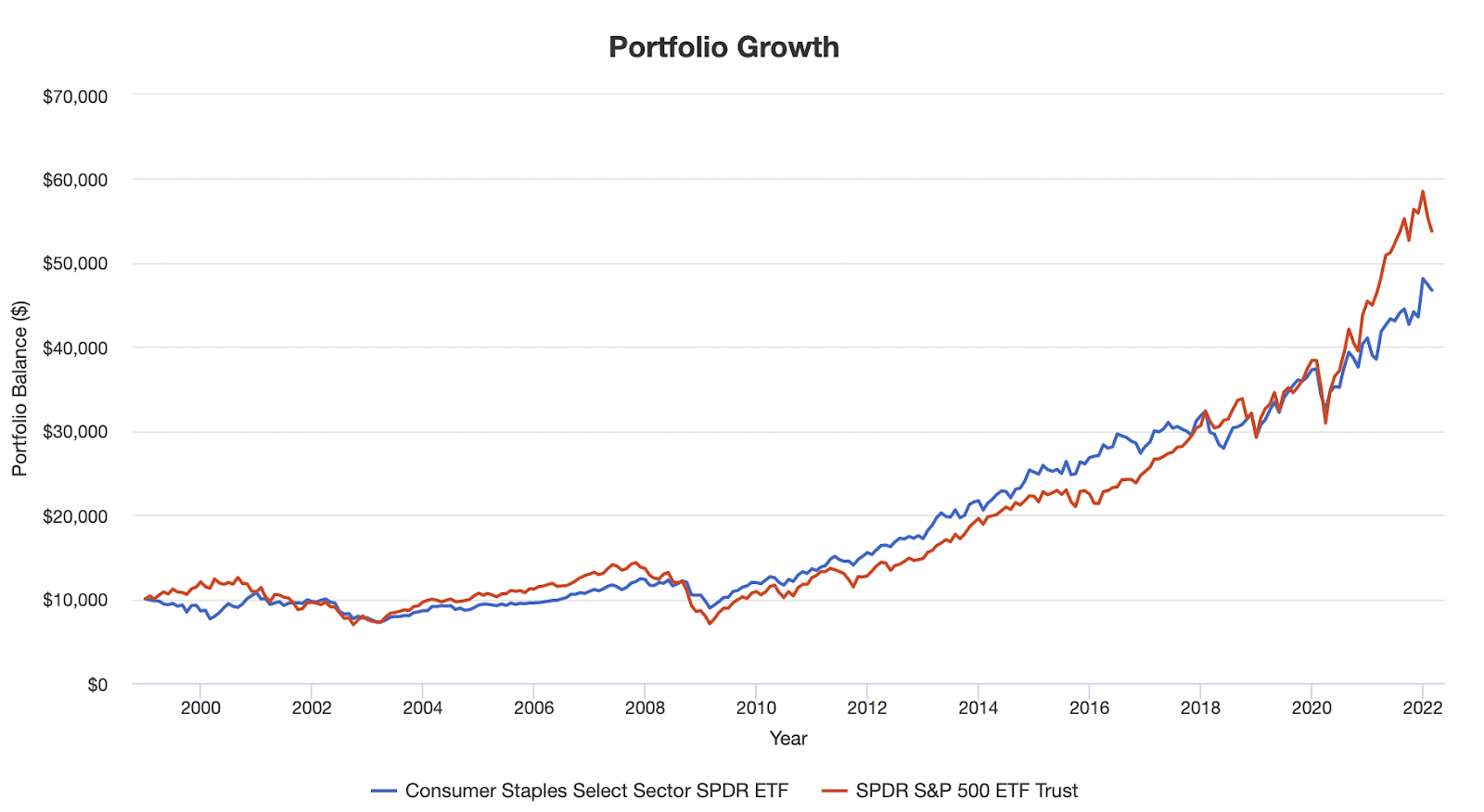
2. Many dividend aristocrats
Fortifying their defensive nature, consumer staples stocks are well known for consistently paying solid dividends.
Many dividend aristocrats – companies that have increased their dividends each year for at least 25 consecutive years – are part of the consumer staples sector.
They include household names* such as:
- Procter & Gamble (2.4% dividend yield)
- Coca-Cola (2.9% dividend yield)
- Colgate-Palmolive (2.4% dividend yield)
- Kimberly-Clark (4% dividend yield)
*Dividend information from Nasdaq Data as of 15 March 2022
As of February 28 2022, the indicated dividend yield for the overall S&P 500 consumer staples sector is 2.5% as compared to 1.5% for the S&P 500.
3. Potential drawbacks
Consumer staples stocks typically experience modest, albeit, steady growth. The profit margins on consumer staples products are known to be thin and the industry is highly competitive.
As inflation soars, rising input costs – due to supply chain issues and increased raw material costs – could weigh on the consumer staples sector. This is compounded by many consumer staples companies facing higher freight and logistics costs as well.
According to data from FactSet, the consumer staples sector had the highest percentages of companies that cited “inflation” on their Q4 earnings calls during this period. This suggests that inflation is a key concern for many consumer staples companies this year.
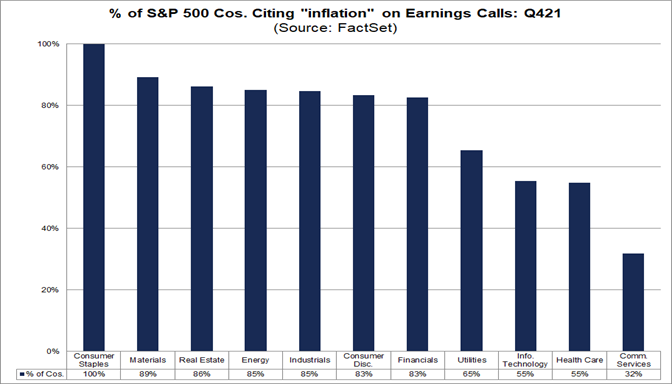
Not every firm will be able to raise their prices (to protect profit margins) without losing too many customers. Companies without strong brand loyalty are susceptible to consumers switching brands, a trend that intensified during the pandemic.
Finally, although consumer staples stocks hold up well in recessionary periods, they tend to lag the broader market during boom times.
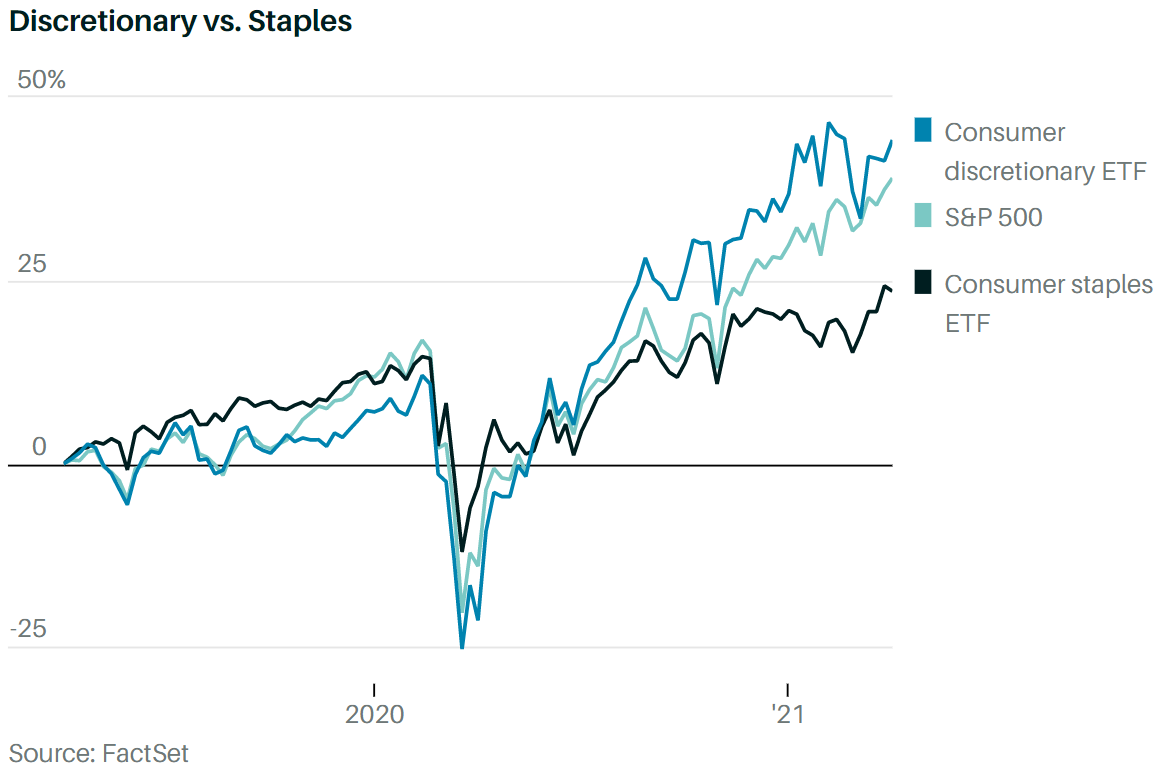
As such, they may not appeal to investors who seek rapid growth, or who are willing to take on a higher degree of risk for higher potential returns.
4. Types of consumer staples stocks
There are five main subcategories of the consumer staples sector.
Retail. These include brick-and-mortar retailers like Walmart and Costco, as well as e-commerce sites that sell consumer staples products.
Food and beverage. These include companies that make food staples like cereals and snacks, and beverages like soft drinks.
Household goods. Companies that make home maintenance products like detergents and dishwashing soap fall into this category.
Personal care. These include makers of beauty and personal hygiene products such as Estee Lauder and Procter & Gamble.
Alcohol and tobacco. Cigarettes or alcohol are consumer staples to some people. Well-known companies include Altria Group (Marlboro cigarettes) and Diageo (Johnnie Walker and other liquor brands).
5. How to invest in consumer staples
You can invest in the consumer staples sector through individual stocks or ETFs. Investors looking for broad exposure to the sector usually choose ETFs for diversification and convenience.
Popular consumer staples ETFs include:
- Consumer Staples Sector SPDR Fund (XLP) which tracks the S&P 500 Consumers Staples sector
- iShares Global Consumer Staples ETF (KXI) which offers targeted access to consumer staples stocks from around the world
- Global X MSCI China Consumer Staples ETF (CHIS) which tracks the consumer staples sector in China
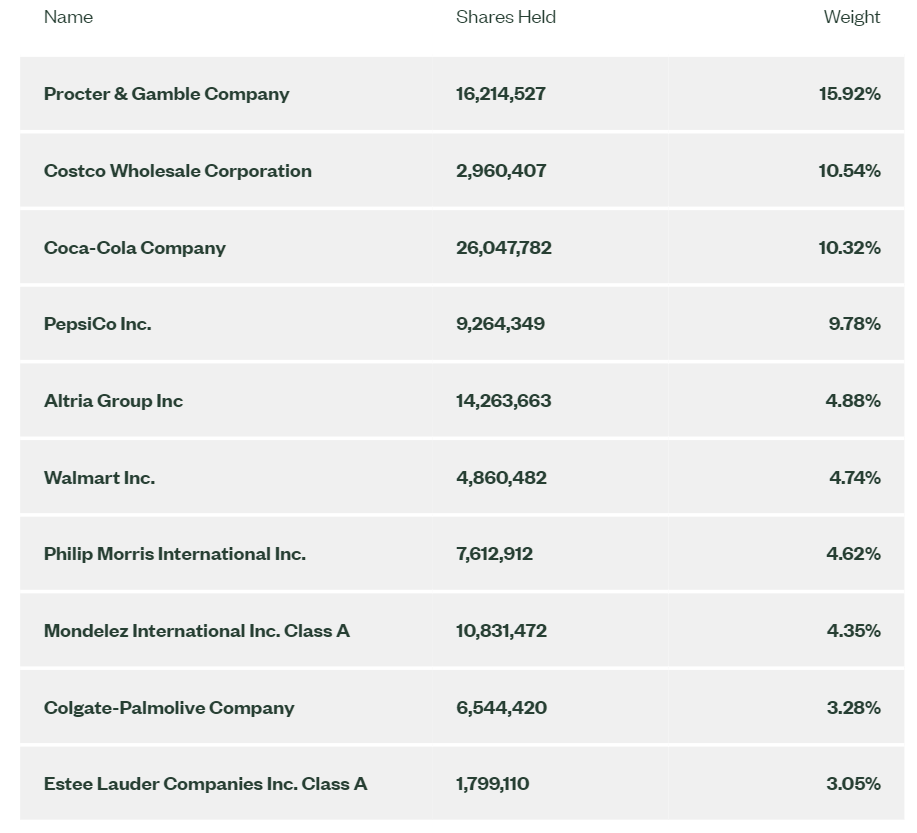
Whether you want to invest in consumer staples stocks or ETFs, Syfe enables you to do so easily and affordably.
For DIY investors, you can use Syfe Trade to invest in specific stocks and ETFs. From now to 31 March 2022, you get to enjoy 5 free trades and super low commissions of US$0.99 per trade thereafter.
What’s more, you will receive $60 in cash credits when you top up at least S$1,000 to your Syfe Trade account and make your first trade!
Prefer to invest in the consumer staples sector via a ready-made portfolio? Syfe’s Core portfolios hold the XLP ETF as part of their diversified holdings. With Core portfolios, you can start investing from any amount and dollar cost average effectively every month.
Ready to get started? Simply download the Syfe app and use Singpass to create your account in under 3 minutes.



You must be logged in to post a comment.